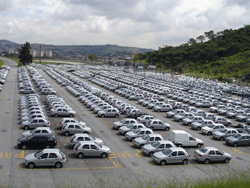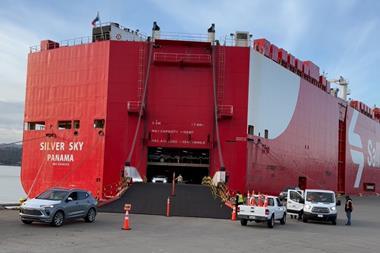 The governments of Brazil and Mexico have extended their vehicle trade agreement, which was signed in 2012, for a further four years. It was due to expire on March 18th, but the extension now means the limit will remain in place until March 2019.
The governments of Brazil and Mexico have extended their vehicle trade agreement, which was signed in 2012, for a further four years. It was due to expire on March 18th, but the extension now means the limit will remain in place until March 2019.
Quotas are set by the dollar value of vehicles traded between the two countries, but the amount included in the new agreement is lower than that of the outgoing one. The new deal is structured for a 3% increase each year, from the 2015 start point of $1.56 billion. This compares with year on year increases of 7% under the previous agreement.
According to analyst firm IHS Automotive, the agreement between these trading partners seems to favour Brazil, as Brazil was looking to extend quotas while Mexico was encouraging its partner to shift to a free-trade arrangement, as promised in 2012.
IHS said that the new agreement will see the two countries change to an FTA as of March 19th, 2019.
“In 2012, when Brazil and Mexico negotiated the first agreement, Argentina also insisted on a similar arrangement,” stated IHS. “Argentina's agreement will soon expire as well, and as that country is facing a more difficult environment than Brazil, it may also take a similar route in negotiating a new quota agreement with Mexico.
Trade deficit
Brazil has refused to sign a free-trade agreement this time around because of its current vehicle trade deficit with Mexico. The government cited an automotive trade deficit with Mexico of $1.69 billion.
Prior to the finalisation of the latest arrangement on Monday this week (March 9th), Luis Moan Yabiku, president of Anfavea, the Brazilian association of vehicle makers, told Dow Jones, "We need to deal with our competitiveness issues before reaching a free-trade agreement, with any nation."
Mexico overtook Brazil last year as Mercosur trading region’s biggest car producer, and Brazil sees Mexican exports as a big threat to its domestic vehicle production. The government has also said that that appreciation of the Brazilian real in the last decade has damaged the country’s competitiveness on certain products, including vehicles.
While Mexico is now the world’s fourth biggest vehicle exporter, with 2.6m cars exported out of a total production level of 3.22m units, passenger car production in Brazil dropped 2.3% to 200,100 units in February compared to the same month in 2014 (281,600).
On the domestic market meanwhile, after passenger vehicle sales in Brazil more than doubled between 2002 and 2012, from 1.48m to 3.7m units, GDP has since dramatically dropped and vehicle sales have declined.
According to Anfavea, 185,900 vehicles were sold in February, a drop of 28.3% on the same month last year and a 26.7% drop on January this year.
However, Brazil has seen an increase in exports of almost 92% in February compared to January, according to Anfavea, amounting to 31,300 against 16,300. Compared to February 2014 that shows a 9.2% increase over the 28,600 exported in the same month last year. The country reintroduced a consumer tax on new vehicles, called the Industrialised Product Tax (IPI), which raised prices 4.5% to 7%, depending on the size of the vehicle.
Brazil posted its first annual trade deficit in 14 years in 2014.
According to the IHS Automotive Production Forecast, which takes into account the continuation of the quota situation, by 2019, Mexico will see its highest production volume in the C Car segment. At about 1.76m units, that will account for 36% of the country's forecast 4.92m units of production.
By contrast, IHS Automotive stated, Brazil's highest-volume production segment will be the B-car segment, and 1.86m units will account for 50% of the country's forecast production of 3.71m units.
“While IHS Automotive forecasts Brazil's production of vehicles in the A-car segment will increase from 377,674 units in 2014 to about 544,000 in 2021 (with some troughs and peaks), production of vehicles in that size class in Mexico are expected to fall from 47,302 units in 2014 to 0 by 2018,” stated the analyst firm.



































